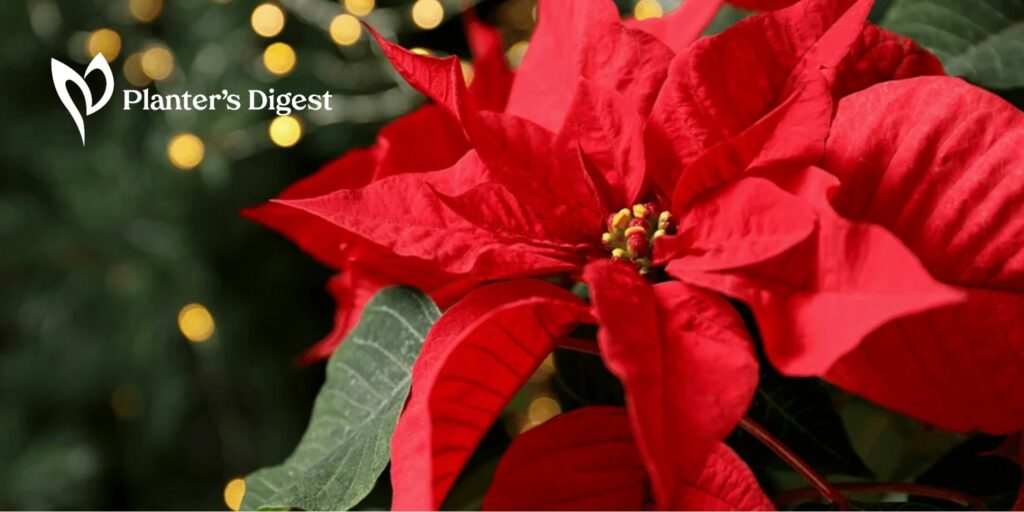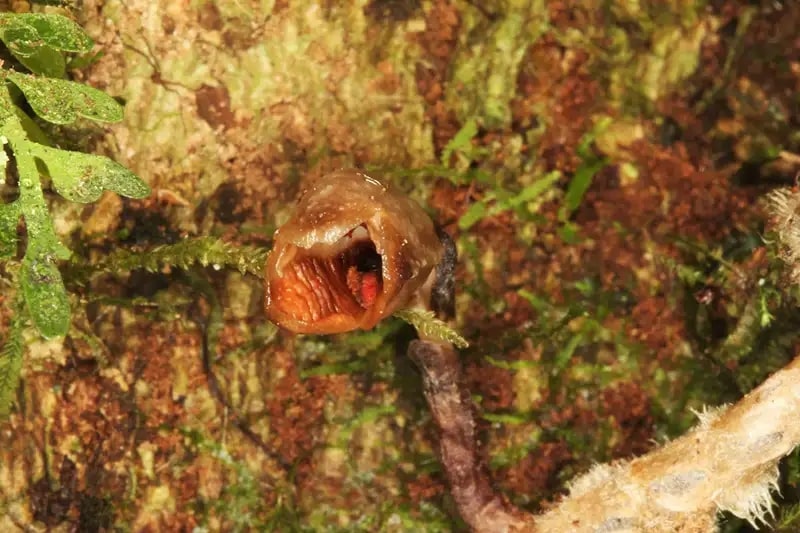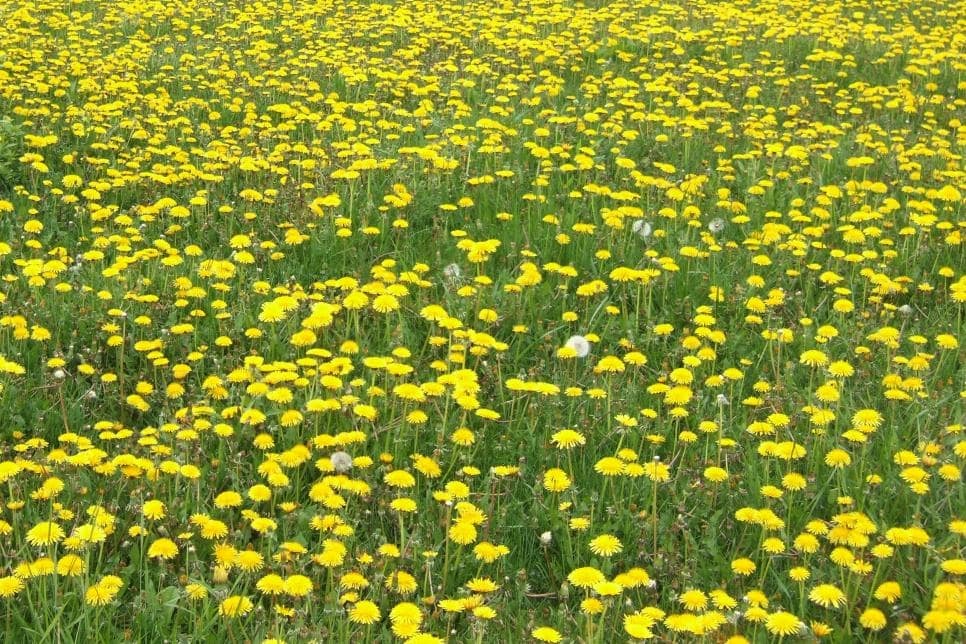Poinsettias are fantastic choices when you’re looking to add pops of color to your space, and what better time than today to pick up some poinsettia plants for a festive garden and home decor?
But how do we make sure they stay beautiful for the season and healthy throughout the year? We got both covered.
Plus, we have some poinsettia picks and pointers to get you past one season to the next without worries or woes!
How to Provide Optimal Growing Conditions for Poinsettias
When it comes to poinsettias, you’ve got to give them the right conditions to keep them happy and colorful. There are several factors that affect them, so let’s go over them one by one.
Provide good lighting conditions
Did you know that poinsettias are native to Mexico? If you’re going to grow them right, you’ll need to replicate their native light conditions.
Position your poinsettia near a sunny window covered by sheer curtains. Direct sunlight can get too intense.
Most of the time, the afternoon sun is the cause of scorched poinsettia leaves. Where possible, keep them in an area with lots of indirect light.
Poinsettias need at least 6 hours of indirect sunlight daily. If there’s not enough natural light, use artificial grow lights.
Expose them to correct temperature ranges
Since they’re pretty used to hot weather, poinsettias can be sensitive to cooler temps. Make sure they’re grown or placed in spots that get between 65 to 75°F (18 to 24°C) during the day.
At night, encourage bud formation and color saturation by exposing your poinsettia to cooler temperatures. These should be anywhere from 60 to 65°F (15 to 18°C).
Manage humidity
Humidity is pretty important if you want to avoid leaf drop and pest infestations. Since poinsettias grow best in higher humidity environments, there are 3 ways you can enhance the air moisture levels around the plant.
A humidity tray, which is a small tray filled with pebbles and water, should work well when placed near the plant. You can also get a room humidifier to automatically keep the air moisture at your desired levels.
Misting is another option, but it’s pretty temporary so that’s something we suggest you do as a supplement. Overall, just make sure your poinsettia has enough humidity, especially during the winter months as indoor heating systems can easily dry the air.
Use proper soil and pot selection
Poinsettias grow best in well-draining soil if you want to prevent root problems. Use a good potting mix for houseplants.
Look for ones that usually include perlite, vermiculite, or sand to help with drainage. But if you don’t want to buy a premade potting mix, you can always make one yourself.
Poinsettias like slightly acidic soil with a pH of around 5.5. You can check the pH with a kit from a garden center to make sure your potting soil hits just the right spot on the scale.
When repotting, choose a pot that’s just a bit bigger than the plant’s root ball for some growth space. Poinsettias do well in snug pots, as the fit encourages flowering.
Common pot materials are plastic and clay. Plastic retains water longer, while clay pots allow for better evaporation.
Provide ideal watering and feeding
Poinsettias should be watered regularly, but make sure the top inch of soil dries out a bit between watering. Otherwise, you’d run the risk of overwatering or underwatering the plant.
Both scenarios won’t end well. Overwatering will cause root rot while underwatering will cause the poinsettia to wilt and possibly die.
Use a balanced liquid fertilizer with a good NPK (nitrogen, phosphorus, potassium) ratio like 20-20-20 or 14-14-14 every 2 to 4 weeks during spring and summer. Water the plant before applying fertilizer as it allows for better nutrient absorption.
Treat and control pests and diseases
It’s not just about buying your poinsettias and hoping for the best. You need to keep them healthy too!
We’ve got a list of the most common pests and diseases to watch out for. For each one, we’ve also provided the most effective treatments that are safe and organic.
Whiteflies
Whiteflies come out flying when the plant gets a bit disturbed, so try nudging your poinsettia to see if any are hiding in plain sight. Left alone, whiteflies can easily spread among other plants and cause serious infestations.
Use yellow sticky traps, which you can buy online or from gardening centers, to catch these white, flying insects. We also recommend introducing natural predators like ladybugs or parasitic wasps to control the infestation.
Aphids
Aphids can be pretty sneaky as they go about sucking the plant sap. Left untreated, they can quickly multiply in numbers and spread out to other plants.
Spray the affected areas with a strong stream of water to dislodge and get rid of them. A stronger approach would be to use insecticidal soap or neem oil.
Mealybugs
Mealybugs are tiny bugs with a waxy coating under their cottony appearance, and you’ll often find them in leaf joints and crevices. They easily damage leaves, causing wilting, yellowing, and browning.
You can get rid of them by using cotton swabs or a toothbrush soaked in rubbing alcohol. To keep them away, apply insecticidal soap after removing them.
Spider Mites
Spider mites are very small spiders that make fine webs under leaves. You can recognize them by the spotted, discolored leaves among the webbing in the leaves.
One way to outwit them is to raise the overall humidity to discourage their presence. If you’re feeling a bit more feisty, use insecticidal soap or neem oil to fight them off for good.
Powdery Mildew
Powdery mildew shows up as white powder on leaves that distort and yellow them. Normally, they’re caused by fungal issues such as stagnant humid air.
They make your poinsettia look unattractive, which is something you didn’t sign up for when you got the plant. You can improve the air circulation around the plant and use a fungicidal spray to prevent powdery mildew from paying your plant a visit.
Root Rot
Plants get root rot when there’s too much stagnant water around the roots. Signs of root rot include the plant wilting or its leaves dropping due to soggy decaying roots beneath the soil.
The sad thing about this problem is that if you’re vigilant enough, you can quickly treat the issue. But if you leave it alone, root rot can eventually kill your plant without you realizing it until it’s too late.
To prevent root rot, make sure there’s good drainage and repot the plant in well-draining soil as needed. When repotting a plant that’s been exposed to root rot, clean and sterilize the roots to prevent the fungus from coming back.
Botrytis Blight
Botrytis blight is a gray mold that harms poinsettias by making them wilt and decay. To fix it, remove infected leaves, improve air circulation, and water the soil from below.
Watering from above just makes the problem worse since it encourages fungal issues on the leaves to form. Instead of using a watering can with a rainwater nozzle, use one that has a spout for a more focused watering style.





